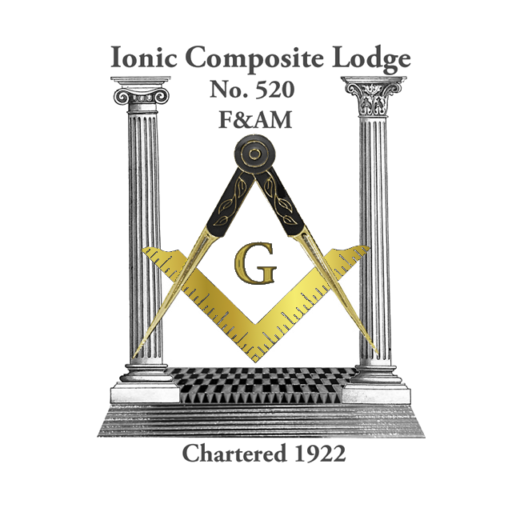… and God said “Let there be light,” and there was light.
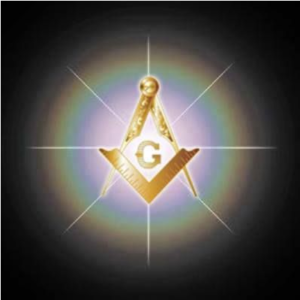 Before the universe existed as we know it today, there was darkness. Then there came a great light, and the universe was called into existence. Each and every living thing on our planet, from the lowest single-celled bacteria to human beings and everything in between is made of and powered by the same matter and energy called into being with the very first Light of Creation. Science informs us that matter and energy are neither created nor destroyed in this universe – they can merely be transformed, but are always conserved. Masonry teaches us that the Light of Truth is as powerful and potent today as it was at the very beginning of time itself. We have only to seek it, and finding it, help others who seek it to find it as well.
Before the universe existed as we know it today, there was darkness. Then there came a great light, and the universe was called into existence. Each and every living thing on our planet, from the lowest single-celled bacteria to human beings and everything in between is made of and powered by the same matter and energy called into being with the very first Light of Creation. Science informs us that matter and energy are neither created nor destroyed in this universe – they can merely be transformed, but are always conserved. Masonry teaches us that the Light of Truth is as powerful and potent today as it was at the very beginning of time itself. We have only to seek it, and finding it, help others who seek it to find it as well.
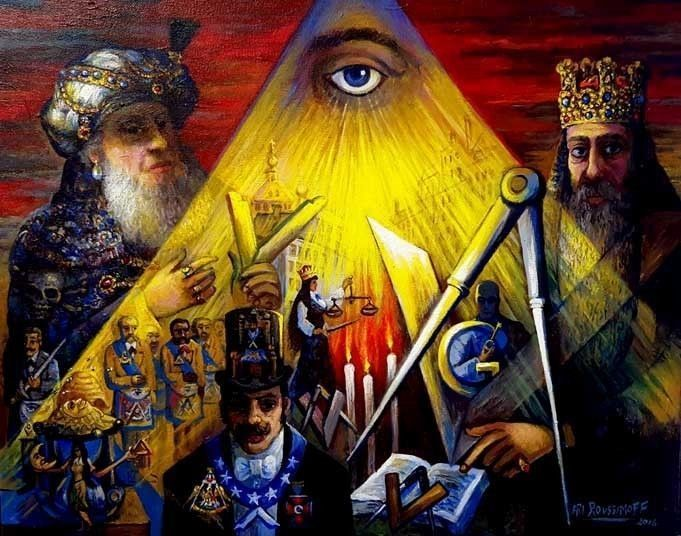 Even as the universe itself did, every Masonic journey starts in the dark. As we learn, we are exposed to more and more light, and we see more clearly what has always been before us, if only we had known where and how to look. Masonry is the world’s oldest Fraternity – a society of friends and brothers intent on improving themselves and their communities through education, tolerance, brotherly love, and charity. In every age and country, where freedom has been the ideal, there Masons have met. Where learning has been valued, there Masons have studied. Where Masons meet, there is love, there is learning, and there is a vision of better world for all. Where the square and compass of Masonry are found, there you will find good men and true, who can be relied upon without question or hesitation.
Even as the universe itself did, every Masonic journey starts in the dark. As we learn, we are exposed to more and more light, and we see more clearly what has always been before us, if only we had known where and how to look. Masonry is the world’s oldest Fraternity – a society of friends and brothers intent on improving themselves and their communities through education, tolerance, brotherly love, and charity. In every age and country, where freedom has been the ideal, there Masons have met. Where learning has been valued, there Masons have studied. Where Masons meet, there is love, there is learning, and there is a vision of better world for all. Where the square and compass of Masonry are found, there you will find good men and true, who can be relied upon without question or hesitation.
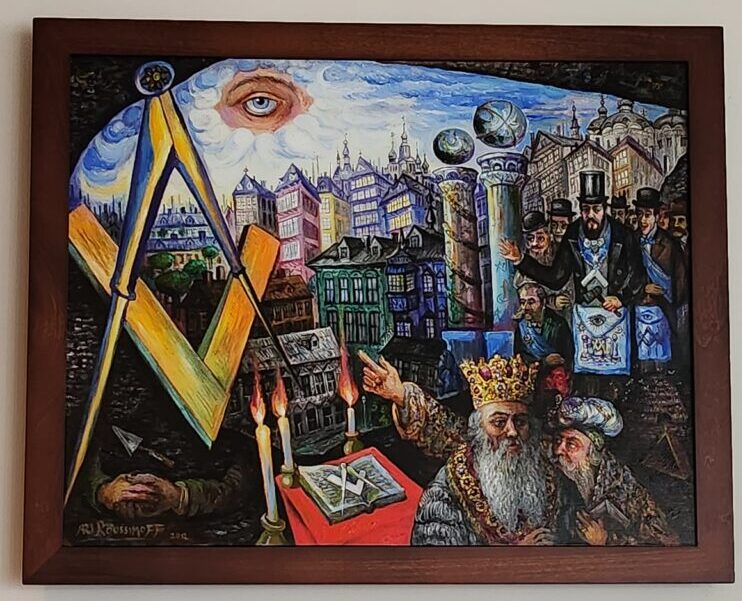
What is this vision, you might well ask? Is it a world where only Masons rule and all others are second class? On the contrary – the vision of Masonry is a world of Harmony, of Light, of Truth, and of Peace. It is a world were everyone is tolerant, where we rejoice in the Brotherhood of man beneath the beneficent guidance and Majesty of the Divine. Where all good men join together in continuing the work of Creation to make the world a better place for all living things, the mighty and the meek, the great and the small, the rich and the poor. A world where humanity acts as good and proper stewards for the world which God has delivered into their keeping and care. Masons strive to bring this world about, one man at a time.
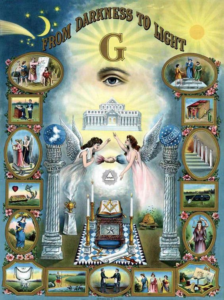 Their compassion for others manifests itself in many ways, from housing neglected and abused children to helping seniors remain independent. Masons contribute more than $1.4 million every day in the United States alone to aid individuals who are sick, aged, or destitute, or whose physical, emotional or psychological needs are not being met. The vast majority of Masonic philanthropies assist people who are not Masons. Masonry is more than a mere social club, networking opportunity, or fraternity in the collegiate sense. It is a body of knowledge and a system of ethics and moral principles based on the belief that each man has a responsibility to improve himself and the world while remaining devoted to his family, faith, country, and Fraternity.
Their compassion for others manifests itself in many ways, from housing neglected and abused children to helping seniors remain independent. Masons contribute more than $1.4 million every day in the United States alone to aid individuals who are sick, aged, or destitute, or whose physical, emotional or psychological needs are not being met. The vast majority of Masonic philanthropies assist people who are not Masons. Masonry is more than a mere social club, networking opportunity, or fraternity in the collegiate sense. It is a body of knowledge and a system of ethics and moral principles based on the belief that each man has a responsibility to improve himself and the world while remaining devoted to his family, faith, country, and Fraternity.
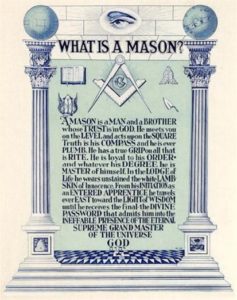
So what is Masonry? Masonry is a means for good men to learn a way to become even better, and for those who wish to make the world a better place to increase the impact of their actions by joining together with others with the same goal and purpose. “It is not good for man to be alone,” said the Divine in the book of Genesis. Masonry is proof of this, because when men come together as Masons, they are able to accomplish feats that would be impossible for any one man or group of men acting independently to achieve. If you wish to learn more, click on the items below, and take your first steps into the Light…
Masonic Principles
The Three Principle Tenets of Freemasonry are:
- Brotherly Love: --> Manifests as tolerance, acceptance of others regardless of race, religion, political or social opinion, lifestyle, or creed. All are equal, and all are accepted. In the United States, any discussion of Politics or Religion (comparative, us vs. them kind of stuff, as opposed to casual mention in passing or inclusive prayers that are non-denominational) in Masonic Lodges is strictly prohibited to prevent disharmony among the brethren. The goal is that when a man sets foot in Lodge, he knows that he can express himself about any relevant topic freely and openly without judgement, fear, or prejudice, and he is expected to extend others the same courtesy. This allows those who might have radically different political views, for example, to get along just fine as Lodge Brothers, and fosters an attitude of tolerance, acceptance, and civility in the Brethren.
- Relief: --> Manifests most frequently as charity. Masons are incredibly philanthropic, with each Masonic body having their own special charitable cause. Masons also extend the concept of relief into the concept of helping those who require assistance in non-financial ways, be it with anything from help doing chores to support either private individuals or public entities all the way through counseling and therapy, and everything in between. Many other service-based organizations were actually started by Masons.
- Truth: --> Manifests as honesty, integrity, and honor. While it is the most straightforward of the three tenets, it is also the deepest, as Truth extends into all aspects of one's life. It is not sufficient to be honest when in public, or to be good when in the public eye. It is expected that Masons will be good and true even when alone in the comfort of their own homes, when no one can see or hear them, and will maintain their integrity and principles even when they could with absolute certainty get away with being less than totally honest with no one else being the wiser.
Masons are required to act with honesty and integrity, to be charitable and kind, to care for their brothers and those around them, and to be generally tolerant. Generally speaking, Masons are expected to:
- Believe in a Supreme Being by whatever name and in whatever form
- Be tolerant of the beliefs and religious practices of all others so long as they do not involve practices that are repugnant to all reasonable men (ex: cannibalism, human sacrifice, etc).
- Act with honor and integrity in everything they do
- Be accepting of different political, social, and lifestyle choices and beliefs.
- Offer aid to distressed brother Masons when and where needed.
- Strive to leave the world a better place than they entered it.
- Uphold and maintain the principles of the country and its government and refrain from any subversive or treasonous practices or activities.
- Practice general charity and help those in need to the best of their ability
- Practice the four cardinal virtues - Temperance, Fortitude, Prudence, and Justice.
This definition of Freemasonry, copied from the 1823 Farmer's Almanac captures the spirit of Masonry fairly well:
“The real Freemason is distinguished from the rest of Mankind by the uniform unrestrained rectitude of his conduct. Other men are honest in fear of punishment which the law might inflect; they are religious in expectation of being rewarded, or in dread of the devil, in the next world. A Freemason would be just if there were no laws, human or divine except those written in his heart by the finger of his Creator. In every climate, under every system of religion, he is the same. He kneels before the Universal Throne of God in gratitude for the blessings he has received and humble solicitation for his future protection. He venerates the good men of all religions. He disturbs not the religion of others. He restrains his passions, because they cannot be indulged without injuring his neighbor or himself. He gives no offense, because he does not choose to be offended. He contracts no debts which he is certain he cannot discharge, because he is honest upon principle.”
Grand Lodge’s Mission
The mission of the Grand Lodge is to promote the ideals and traditions of the Fraternity in California. By their efforts, they hope to help bring about the eventual fulfillment of their vision of "The World in Harmony" by building peace and understanding through friendship, service, and self-improvement. To help enact that, the Grand Lodge of California is currently operating according to its 2025 Strategic Plan, which is based on three themes or pillars.
- True Friendship = Masons understand that true and deep friendships are among the most important outcomes of joining Masonry. The bonds formed with fellow Masons last lifetimes, and shape lives in far-reaching ways that enrich all involved. The Grand Lodge is actively involved in training the leaders of its constituent Lodges on how best to foster and cause these strong bonds to form and thrive.
- Diversity and Harmony = Harmony in Lodge is an important thing, but the Grand Lodge has noted that where there is only one note, there can be no Harmony. Diversity is a requisite ingredient for true Harmony to exist, in Lodge or out of it. To that end, Lodges are encouraged to be as welcoming and accepting as possible, taking in men from all walks of life in their communities, and never discriminating based on religious, political, socio-economic, or ethnic differences.
- Positive Awareness = Due to a number of factors, Fraternal organizations of all kinds around the world have begun to decline over the past several decades. However, Masonry in particular has declined more than the average, and it was determined that this stemmed largely from a lack of public awareness of who the Masons are and what we do. People are for example, by and large unaware that all Shriners are Masons. They are far more likely to have heard of the Shriners and their hospitals than they are to have even heard of Masons, much less realize that in order to be a Shriner, one must first be a Master Mason. To that end, the Grand Lodge has enacted a program of education of Lodges and Members on just what aspects of Masonry can and should be discussed in public, as well as beginning a PR campaign.
Our Vision
The Vision of the Grand Lodge of California is that of "The World in Harmony", wherein men work on building peace and understanding through friendship, service, and self-improvement.
Member Engagement
Masons in California are well connected to their respective Lodges and to the Grand Lodge. They are encouraged to establish and deepen connections both with fellow Masons, with the Fraternity at large, with their Families, and with the greater Community. Masons are often reminded that they are Masons both in and out of the Lodge, and that what they do outside reflects just as much on who they are as Masons as what they do in Lodge. For this reason, member engagement can be said to include:
- Personal and professional development and achievements
- Building and sustaining lasting, meaningful relationships with friends and family
- Masonic education and study
- Philanthropic activity in all forms
- Masonic outreach (in various forms including but not limited to aiding seniors, charities, volunteering, etc.)
- Positive Awareness campaigns (ex: the #ImaMason campaign, community outreach and visibility events, etc.)
- Participation in Lodge, district, Grand Lodge, and community activities and programs
- Attending Lodge meetings (both at your own Lodge and visiting when travelling abroad)
Lodge Prosperity
A Lodge is both the body of men who make up the basic unit of the Fraternity and (sometimes) the building or location where said men meet. A healthy Lodge is one that can and does:
- Attract quality members
- Impressively convey Masonic teachings through relevant and thought-provoking performance of the ritual
- Arrange worthwhile educational, philanthropic, and social activities
- Govern and manage the business of the Lodge (and Hall association, if the Lodge owns it's own building) effectively, efficiently, and with high standards of integrity and accountability
Community Awareness
California communities are aware of Masonry’s mission and values through lodge activities and programs that improve public education and the general well being of fellow citizens. Lodges and the Grand Lodge effectively use the Internet and local media to communicate with their communities.
- Community awareness is measured by:
- The frequency and quality of lodge participation in community activities and programs
- Media coverage of Masonry
- The quality of lodge and Grand Lodge Web sites
- Public inquiries on lodge and Grand Lodge Web sites.
History of Masonry
Freemasonry is an organization that has roots both mythical and historical in the distant past. While we symbolically trace our heritage back to the building of King Solomon's Temple in Jerusalem in ancient times, the more modern incarnation of Masonry has a more recent origin story. The following is a very simplified overview.
By one measure, Freemasonry dates back to the guilds of European stonemasons who built castles and cathedrals during the Middle Ages. In the Middle Ages, the term “Freemason” was awarded to highly skilled stonemasons hired as free agents to build castles and cathedrals in England and Scotland. Because of the inherent danger of their work, stonemasons formed local organizations, called lodges, to take care of sick and injured members as well as the widows and orphans of those killed on the job. Lodge members met in temporary buildings, usually built next to the cathedrals or palaces being built, to receive their pay, plan their work, train new apprentices, and socialize. In order that their individual and collective reputation not suffer and that future business not be denied them on that basis, the various lodges required their members to act honorably and honestly in accordance with the moral values and teachings of that day and age. This made good economic sense - they didn't want communities to refuse them entry, food, or lodging when traveling to, from, or between jobs or work sites, to be wary of allowing their members to interact with their families (such as marriageable daughters who might consider marrying an honest craftsman with a good steady job), or cross the nobles or church officials who were their primary source of clients and income. By maintaining good reputations, they assured themselves good treatment and future business. These moral teachings and requirements were collectively referred to as "speculative masonry", whereas the actual business of carving and building with stones was referred to as "operative masonry".
Over the years, as demand for actual stonemasons decreased, and with the eventual collapse of the feudal system, the nature of the Lodges began to change. Over time, men interested exclusively in the speculative aspects of Masonry were allowed or "Accepted" into the lodges. Hence Free and Accepted Masons - both those who worked with stone and those who joined to learn about morality from those who at first did. Eventually, lodges became exclusively based on speculative Masonry.
The first modern Grand Lodge was established in England in 1717. In 1718, English Freemasonry spread to France and Spain, and after 1729, to India, Italy, Poland, Sweden, other parts of Europe, and eventually the American colonies. By 1731, Masonry had spread to the American colonies. Benjamin Franklin, George Washington, Paul Revere, and other founding fathers were among the first and most notable Masons in the United States. In 1733, the first American lodge was established in Boston under the authority of the Grand Lodge of England. Of the 39 men who signed the U.S. Constitution, 13 were Masons.
What do Masons do?
Charity is at the heart of most Masonic activities. Each year, California Masons donate millions of dollars and thousands of hours to both small and large philanthropic causes. Masonic charities receive no local, state, or federal funding and are supported entirely by member contributions. To learn more about the Charities supported by our Lodge and California Masons, Click Here.

Allied organizations
The heart of Masonry is the Blue Lodge, which only confers the basic 3 Degrees of Masonry. However, there are a number of allied organizations that fall under the Masonic umbrella. To learn more about these Appendant and Concordant Masonic Bodies, Click Here.
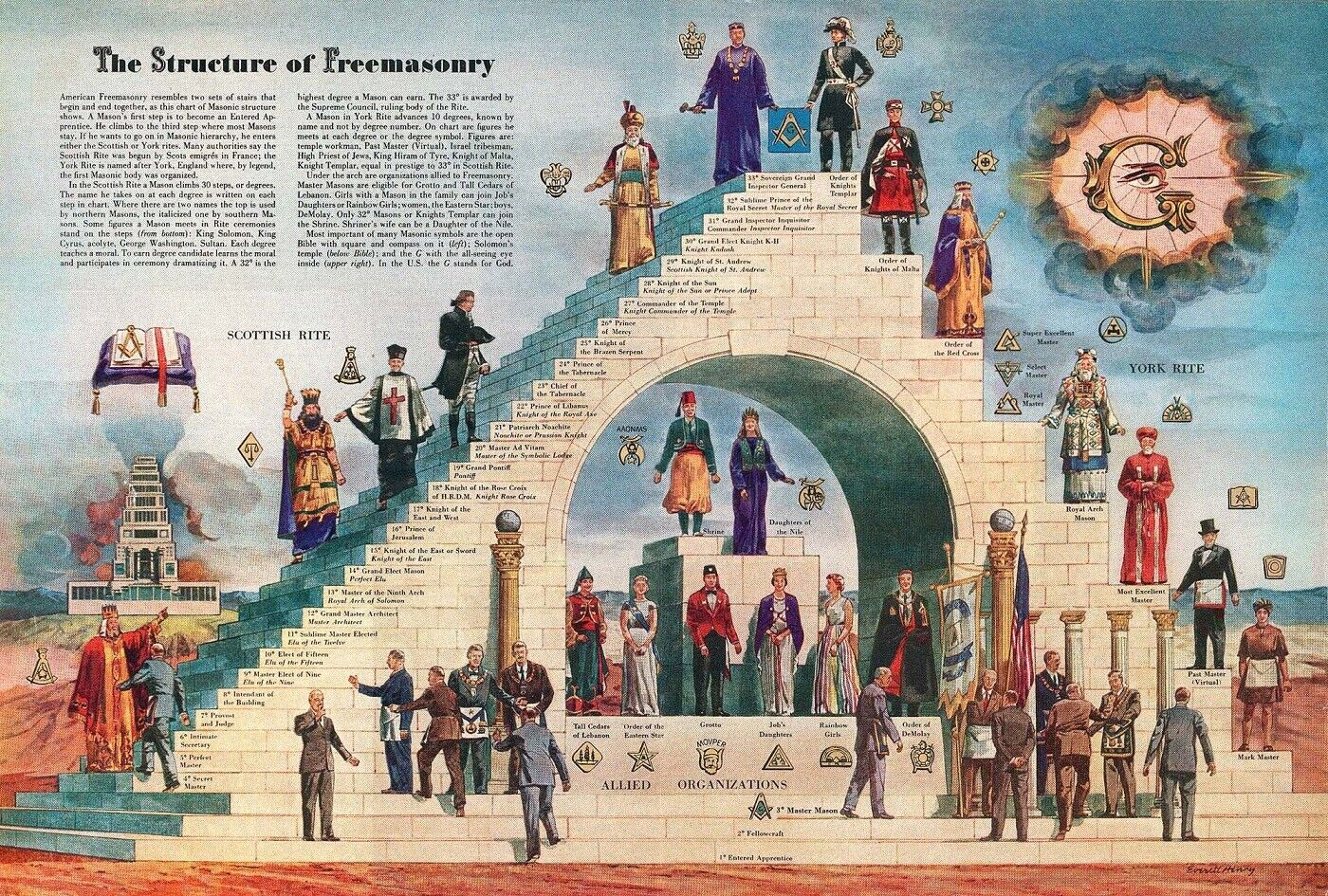
Famous Masons
Many world leaders in business, politics, science, religion, military, sports, entertainment, and the arts have been Masons, including:
- George Washington
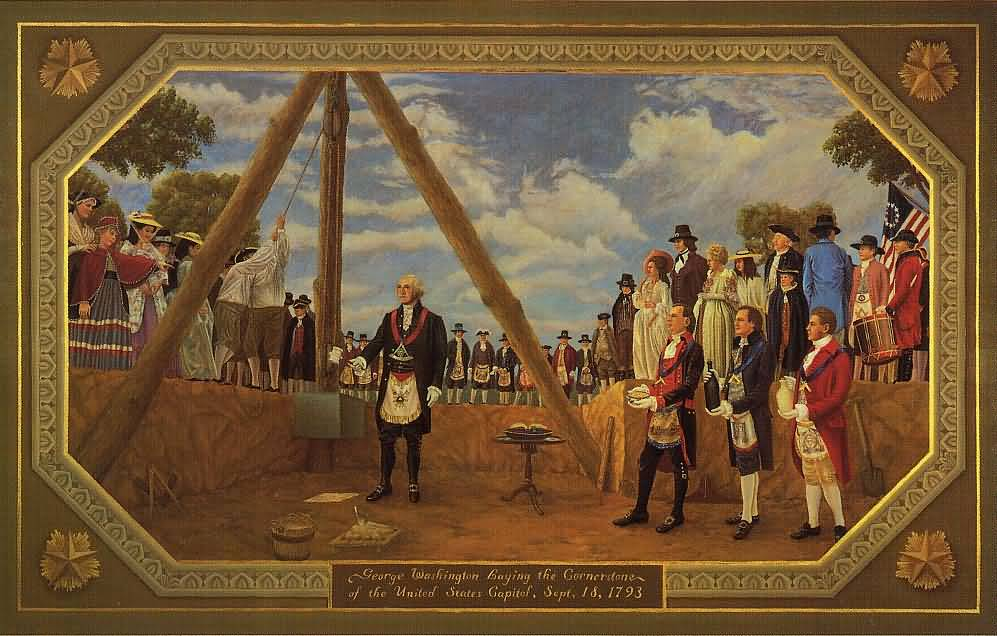
- Benjamin Franklin
- Wolfgang Amadeus Mozart
- Mark Twain (Samuel Clemens)
- Dr. Norman Vincent Peale
- Irving Berlin
- Sen. Barry Goldwater
- Arnold Palmer
- Franklin D. Roosevelt
- Duke Ellington
- Harry S. Truman
- Charles Lindbergh
- Sir Winston Churchill
- Buzz Aldrin
- Gen. Douglas MacArthur
- Henry Ford
- And many more from all around the world!
Freemasonry in California
Freemasonry has been an integral part of California for more than 150 years. During the Gold Rush of 1849, thousands of settlers came to California in search of fortune. Those who were already Masons brought their rich traditions with them, soon establishing some of California’s first Masonic lodges in the mining towns of the Gold Country. These first Lodges were originally chartered under the authority of other Grand Lodges, such as the Grand Lodge of Washington DC. In 1850 – the same year that California became a state – the Grand Lodge of California was established in Sacramento. Within 10 years, the number of Masonic Lodges had grown from 11 to 130, and membership soared from 258 to more than 5,000. Over the years, the Masons have played a key role in shaping the history of California. To date, 19 California governors have been Masons, and at least four California Masons have been elected to the U.S. Senate. Today, the Grand Lodge of California has more than 40,000 members and about 340 lodges located throughout the State, making it one of the largest Grand Lodges in the world by membership and number of active Lodges.
How the Fraternity is Organized
Freemasonry is organized differently by Grand Jurisdiction. Each Grand Jurisdiction is under the auspices and authority of its own Grand Lodge. In the United States, for example, each State has its own Grand Lodge, as does Washington DC. There are also Prince Hall Grand Lodges, as well as other Jurisdictions, such as the Grand Lodge of Iran in Exile (GLI), that share geographic Jurisdiction with State Grand Lodges (such as GLI with the Grand Lodge of California). In each case, the relevant Grand Lodge adopts its own Constitution that lays out the rules under which it and all constituent Lodges will operate. In every case, however, there are certain common features, such as the requirement that all Members and Lodges adhere to the general regulations and Ancient Landmarks of Freemasonry, that constituent Lodges confer only the regular 3 Degrees of Masonry, and that they and their members have no Masonic contact with those from clandestine Lodges or Lodges under the authority of Grand Lodges with whom that Grand Lodge does not have mutual Masonic Recognition.
At the top of each Grand Lodge is the Grand Master. Said individual is the top elected officer of the Grand Lodge for that term (one year in most Jurisdictions including California, though it is more in some places). The Grand Master and his officers both elected and appointed (in accordance with that Grand Lodges constitution) meet no less than once a year at their Annual Communication. California's Annual Communication is held each October in San Francisco. The various Grand Lodge officers, along with duly elected representatives of the various constituent Lodges, meet at that time to conduct and review the business of the Grand Lodge and make such changes as may be necessary for the betterment of the Fraternity, the maintenance of the Grand Lodge and its functions, and the smooth administration of its constituent Lodges. This includes things like setting the following year's budget, electing new Grand Lodge officers as called for, voting on the granting or revoking of Charters for new Lodges, and other matters.
Contrary to any rumors, Freemasonry is not run by a small cabal of shadowy men who drink from skulls. The main bodies of the Fraternity - namely, the Grand Lodges of the various nations and States around the world where Masons meet - are run by men who are simply Master Masons. In general Masonry, there is no degree higher than that of Master Mason. The whole Templar and 33rd° stuff is only applicable to the Appendant and Concordant Bodies of Masonry, though of course men chosen to the highest offices in the various Grand Lodges are often also at least active in said organizations. There is no single worldwide ruling Masonic body or council. There's not even a national one in the US.
What are the Three Degrees?
Masonry in a regular (Blue) Lodge consists of three ascending Degrees:
- Entered Apprentice = 1st°
- Fellow Craft = 2nd°
- Master Mason = 3rd°
To become a Mason, a man must first ask a Mason to become one. For more information on this process, Click Here. Once the application has been submitted, the background check and investigations completed, and the ballot favorably taken, a date can be set for a candidate's Initiation (or 1st° conferral). The Initiation involves leading the candidate through certain rituals and ceremonies that are performed by the Officers and Members of the Lodge. The exact nature of these rituals is a secret, but despite any rumors or theories to the contrary, these ceremonies are never frivolous, demeaning, cruel, sexual in any way, or contrary to the moral dictate of any faith or religion. This is true of all three Degree ceremonies, in fact.
Entered Apprentices are initially introduced to the basic tenets and principle of Freemasonry, and taught the basic lessons necessary to build a good future foundation of moral character upon.
Upon demonstrating proficiency with certain benchmarks from the lessons and ceremonies of the 1st°, an Entered Apprentice may be Passed to the Degree of Fellow Craft (get his 2nd°). Fellow Crafts are taught additional lessons, and they are exposed to a larger portion of the background and history of the Craft. In turn, they are expected to increase their moral attainments in keeping with increased growth and study of our teachings. When their attainments have reached or surpassed the new benchmarks set for them, a date is set for them to be Raised to the Sublime Degree of Master Mason (3rd°)
The benchmark requirements for advancement do not require any particular physical demonstrations of stone working or construction. Rather, they are educational benchmarks involving written (or online) proof of sufficient knowledge of the teachings of the Degree through which they already passed as well as a certain amount of memorization. Some Lodges and Jurisdictions also require a certain period of time to pass before a man may advance from one Degree to the next, but our Lodge does not have such a requirement. Instead, we operate on the understanding that each individual is different, and that no one should be either rushed into or held back from advancement. When they can both affirm and demonstrate that they are ready for advancement, then and only then will they move forward.
